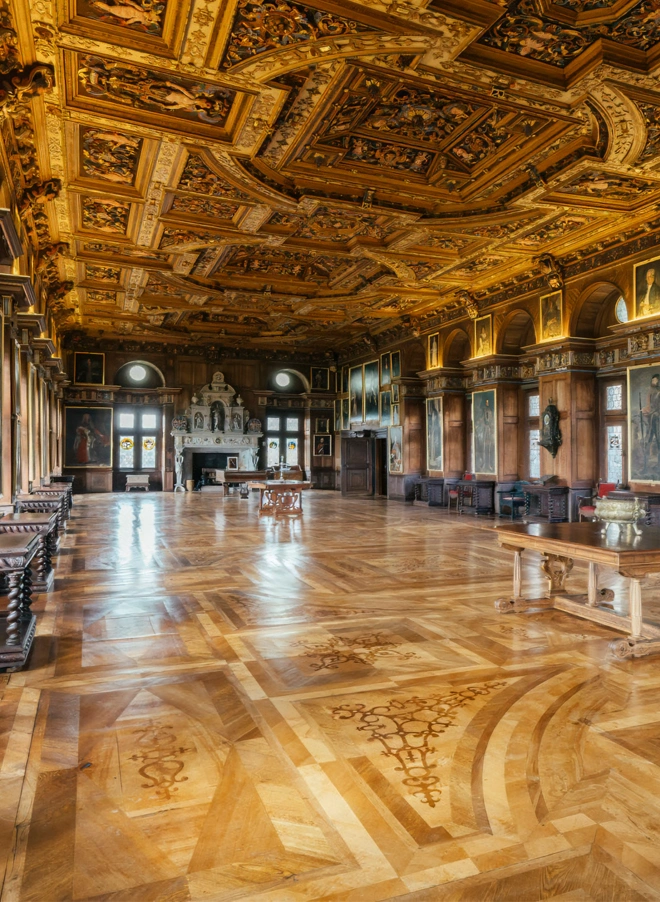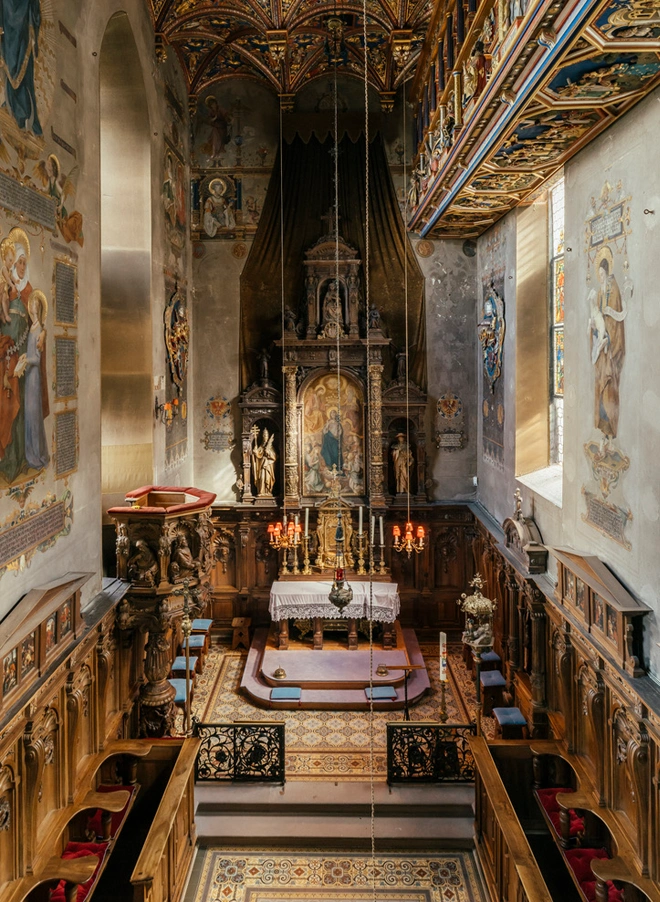The Location on Lake Constance
After the extinction of the Heiligenberg branch of the House of Fürstenberg in 1716, the castle was only occasionally inhabited, such as from 1817 to 1822 by Princess Elisabeth of Fürstenberg. Nevertheless, it has preserved its beauty and grandeur in its picturesque location above Lake Constance. The impressive Knights’ Hall, with its ornate wooden ceiling, parquet floor, and portraits of ancestors, is one of the most magnificent banquet halls of the late German Renaissance. From here, there is a breathtaking view of the surrounding area.



